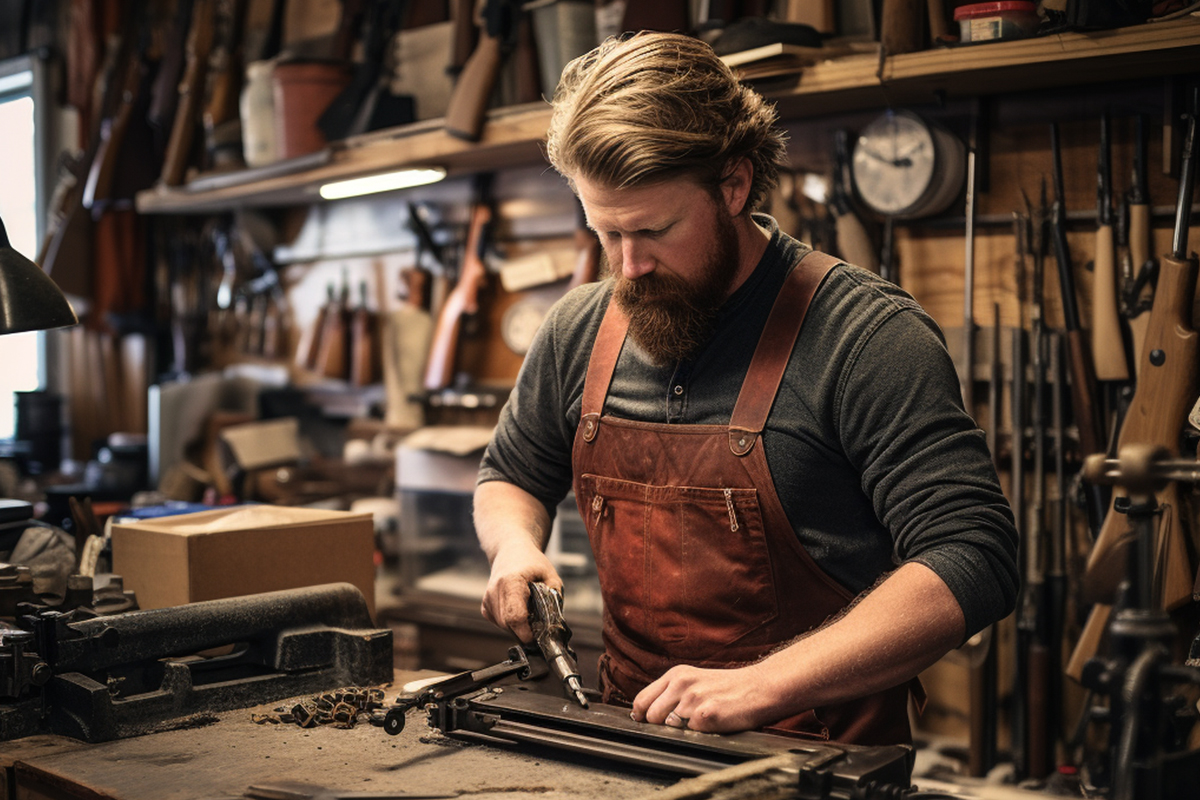In the realm of firearms enthusiasts, there exists a subset of dedicated individuals who not only appreciate the craftsmanship of guns but also possess the skills to maintain, repair, and even customize them. These artisans are known as gunsmiths, and their craft requires a blend of precision, expertise, and a deep understanding of firearm mechanics. For those intrigued by the art of gunsmithing but unsure where to begin, this beginner’s guide aims to shed light on essential tools and techniques needed to embark on this rewarding journey.
Understanding The Foundation
It’s important to understand the fundamental ideas of gunsmithing before delving into its complexities. At its core, gunsmithing revolves around the manipulation, repair, and customization of firearms. This involves a comprehensive understanding of firearm anatomy, functionality, and safety protocols. For more detailed information and resources on gunsmithing, aspiring enthusiasts can explore the offerings of the American Gunsmithing Institute at https://americangunsmithinginstitute.net.
Essential Tools Of The Trade
One cannot embark on a journey into gunsmithing without the proper tools at their disposal. Here are some essential tools that every aspiring gunsmith should consider acquiring:
- Screwdrivers: Precision screwdrivers are indispensable for disassembling and reassembling firearms without causing damage to delicate components.
- Punch Set: A quality punch set is essential for driving out pins and other retaining mechanisms during the disassembly process.
- Hammer: A non-marring hammer is crucial for tapping out stubborn components without causing unnecessary damage.
- Files: Files come in handy for smoothing rough edges, shaping parts, and fitting components together with precision.
- Vise: A sturdy vise provides a stable platform for working on firearms and allows for hands-free operation when necessary.
- Calipers: Precision measurement is key in gunsmithing, and a set of calipers enables accurate sizing and fitting of parts.
- Cleaning Kit: Regular maintenance is essential for firearm longevity, and a comprehensive cleaning kit ensures that firearms remain in optimal condition.
Basic Techniques And Procedures
With the right tools in hand, it’s time to delve into some fundamental techniques and procedures commonly employed in gunsmithing:
- Disassembly: Before any work can be done, firearms must be safely disassembled to access internal components. This process requires meticulous attention to detail to avoid losing small parts or causing damage.
- Cleaning And Inspection: Firearms should be carefully cleaned after disassembly and checked for wear, corrosion, and other problems that could compromise functionality.
- Parts Replacement: Worn or damaged parts may need to be replaced to restore a firearm’s functionality. This could involve anything from swapping out springs and pins to fitting new barrels or triggers.
- Fitting And Finishing: Achieving a proper fit is crucial in gunsmithing, whether it’s fitting a new stock to a rifle or ensuring that moving parts operate smoothly. This may require careful filing, sanding, or other precision work.
- Customization: One of the most rewarding aspects of gunsmithing is the ability to customize firearms to suit individual preferences. This could involve anything from engraving and inlay work to installing aftermarket accessories like optics or muzzle devices.
Safety Considerations
Throughout the gunsmithing process, safety should always remain paramount. Firearms are inherently dangerous tools, and mishandling them can result in serious injury or death. Here are some key safety considerations to keep in mind:
- Always Treat Firearms As If They Are Loaded: Regardless of whether a firearm is disassembled or unloaded, it should always be handled with the same care and respect as if it were loaded.
- Use Proper Safety Gear: Eye protection, ear protection, and other safety gear should be worn whenever working with firearms to protect against flying debris, noise, and other hazards.
- Work In A Well-Ventilated Area: Many gunsmithing tasks involve the use of chemicals or solvents that can produce fumes. A well-ventilated workspace reduces the likelihood of coming into contact with potentially dangerous materials.
- Follow Manufacturer Guidelines: When performing maintenance or modifications on firearms, always refer to the manufacturer’s guidelines and specifications to ensure that work is done safely and correctly.
Conclusion
Embarking on a journey into gunsmithing can be both challenging and immensely rewarding. By familiarizing oneself with essential tools and techniques, aspiring gunsmiths can lay a solid foundation upon which to build their skills and expertise. Whether it’s performing basic maintenance, repairing firearms, or customizing them to perfection, the art of gunsmithing offers endless opportunities for creativity and mastery. So, pick up your tools, exercise caution, and let the journey begin.

